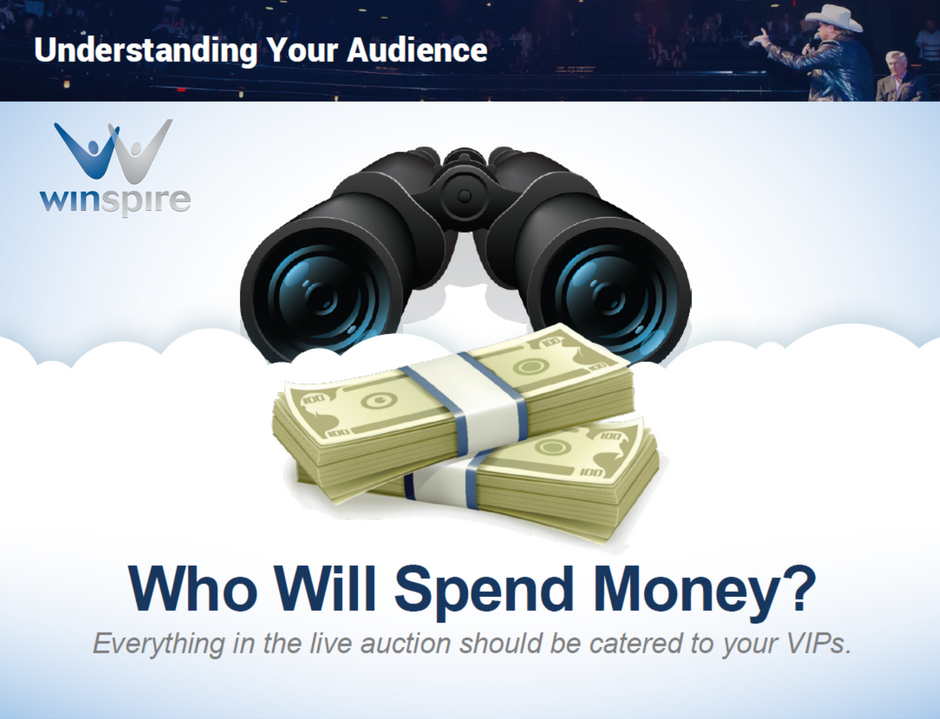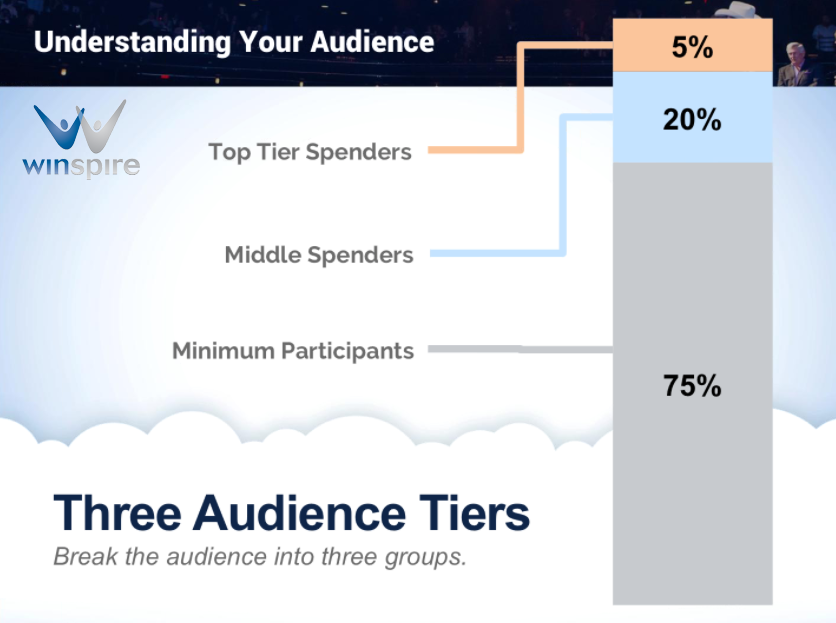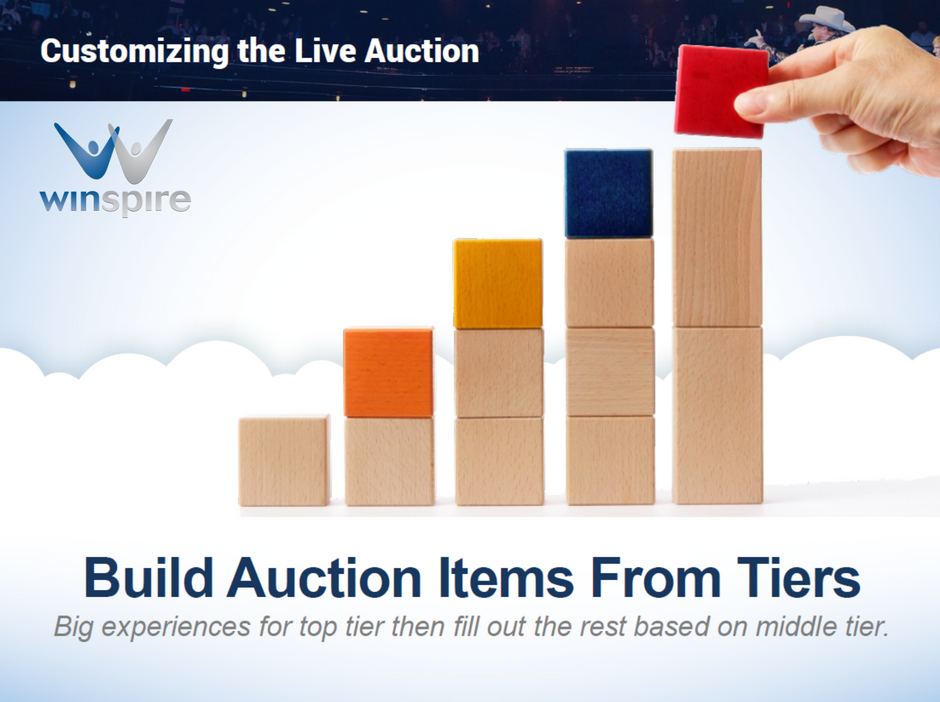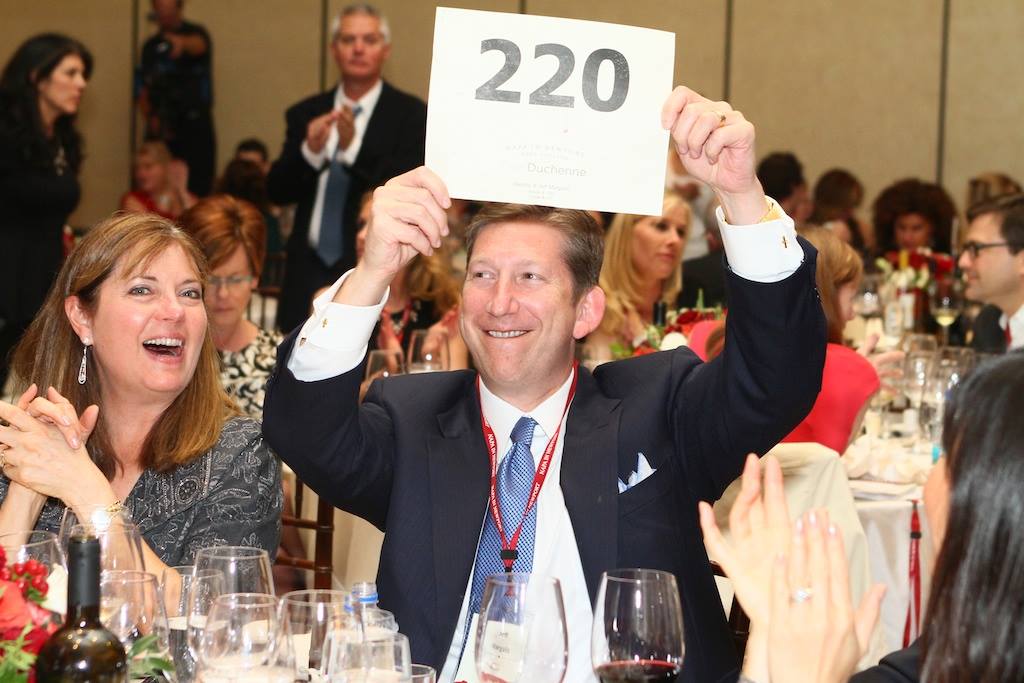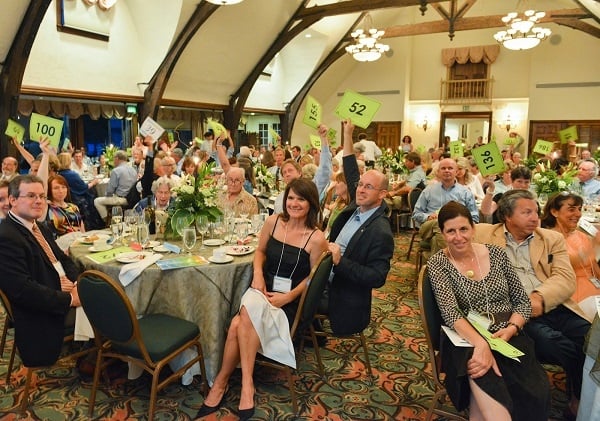When nonprofits have hosted the same event for years, it’s common to reach a plateau.
Wondering how you can break through a slump and once again generate record profits?
If your event includes a live auction, a big piece of the puzzle is learning to cater to your top tier of spenders. Who has the greatest propensity to spend at your event? And how can you customize the live auction so everybody wants to participate – but only the top few percent can actually afford to?
In this post, learn concrete strategies for identifying and targeting the top tier of spenders at your fundraising auction. Mastering this concept will empower you to raise more than ever before.
Understand your audience
How well do you know your donor base, and specifically, event attendees?
You’ve already heard “knowledge is power,” and in the fundraising world, it’s the power that allows you to strategically get the most out of your live auction.
To snag high bids, you need to procure auction items most likely to attract a frenzy of bidding. This can only be done with at least a cursory knowledge about the people buying tickets to your event.
{{cta(‘155e7ab8-26ba-4ec2-8510-2e2f23f7822a’,’justifycenter’)}}
The first step to customizing your live auction for your audience, is to analyze your guest list and determine your audience’s spending capacity. Here’s how benefit auctioneer Heath Hale divides the typical nonprofit gala guest list.
The Three Tiers
“I don’t know if most of you reading agree with this illustration or not, but I find it to be true every time,” shared Hale in a recent Winspire webinar. “Who are your top-tier spenders? Whenever I’m prospecting a new client, this is one of the first questions I ask.”
An effective auction relies on your knowledge of who’s going to spend the money and at what level.
It’s also important to understand the top tier of spenders may only be one guest.
“If you have 500 people in the ballroom and there’s one donor who can spend $25,000, and everyone else is at $10,000 or less, that one donor is your top-tier,” Hale asserts. “Or maybe that top-tier is ten couples who are going to spend $10,000 or $20,000.”
If you’re a smaller event, your top tier may be several people that’ll spend $1,500, and everybody else spends about $100 to $500. “I would encourage you to get a bigger fish in the room!” Hale says. “But you can still maximize your fundraising.”
In the graphic above, the price ranges don’t matter nearly as much as the percentage or the portion of your audience in each range. No matter your goal, the top 5% are the people to whom you want to cater your biggest and best live auction items.
Cater the Live Auction to VIPs
Once you’ve taken the time to understand and envision the top tier of spenders at your fundraising event, it’s time to customize the live auction to match the giving level of these VIPs.
First, consider their interests. Are they artsy? Are they outdoorsy? Are they music or foodie based? Are they travelers? Whatever it is – what do you need to put in front of them?
“My key term is ‘feed‘: Feed the top-tiered spenders,” Hale explains. “This is the group you want buying your live auction items. Everyone will want to bid on them because they’re awesome – but only the top-tiered spenders are going to win.”
Or in the words of benefit auctioneer Danny Hooper – to get the big fish, you need big hooks.
{{cta(‘ace6904c-d5a9-4f23-afcc-36e09cf0f71e’,’justifycenter’)}}
Example 1: One top spender
Say your auction has one couple that’s going to come and spend $15,000, and the rest of spenders are going to spend $5,000 or less.
Hale’s advice: “Let’s put together one mega auction package that’s going to be really desirable to everybody. The bidding is going to go up. Maybe somebody doesn’t bid against them all the way up to $15,000, but maybe that $5,000 bidder stretches to $8,000 or $10,000.
“Now you’re able to sell an item for $10,000 and they have $5,000 left in their pocket to get you started on the Fund-a-Need.”
Example 2: Multiple top spenders
Maybe your top tier of spenders, if you’re a big event, is several people that are going to spend $20,000.
Hale’s take: “Let’s put together three great items, and let those five people fight over them. Then you can further develop that middle tier of auction packages: items that are a level down but still highly sought after and valuable.”
Finally, your third tier of bidders are donors who will certainly want to bid on the auction items, but are more likely to get a silent auction item, do the raffle or raise a paddle.
Bottom line: You want your live auction to be desirable for everyone, but only your top tier of spenders can afford to win.
Snag Top- and Mid-Level Bidding with Travel
One of the best ways to snag top-tier bidding is using incredible bucket-list travel packages. Stay tuned for part 2 of this post in which we explain the best ways to procure travel items that feed first the top tier of spenders, then the second tier, at your event.
In the meantime, click below to check out our top 10 Experiences selling like hotcakes in 2017.
{{cta(‘96472f8a-d732-4bd9-9898-b1bae9f8cf35′,’justifycenter’)}}
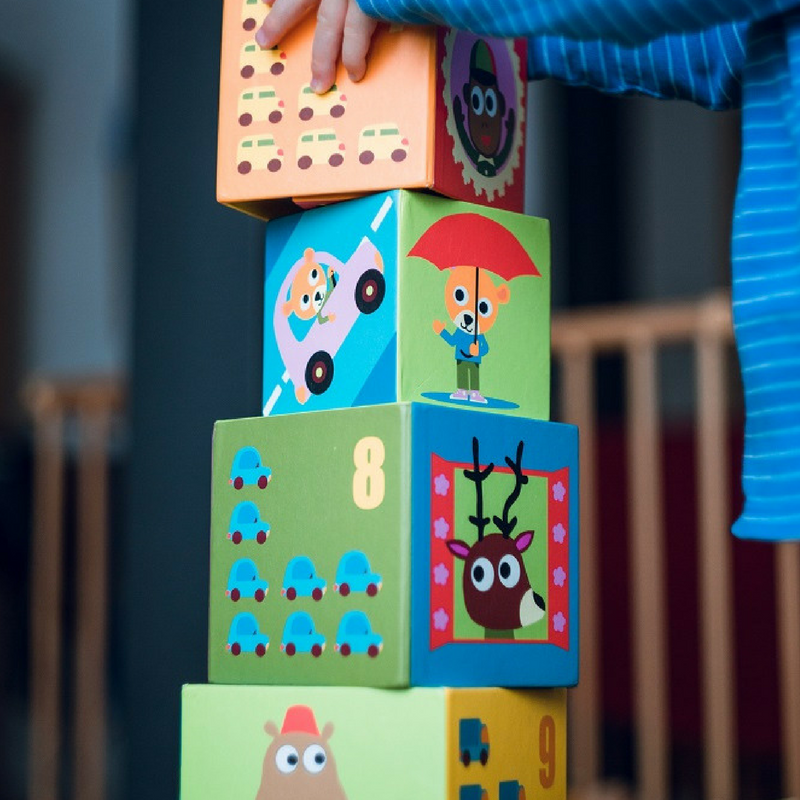
.png)
